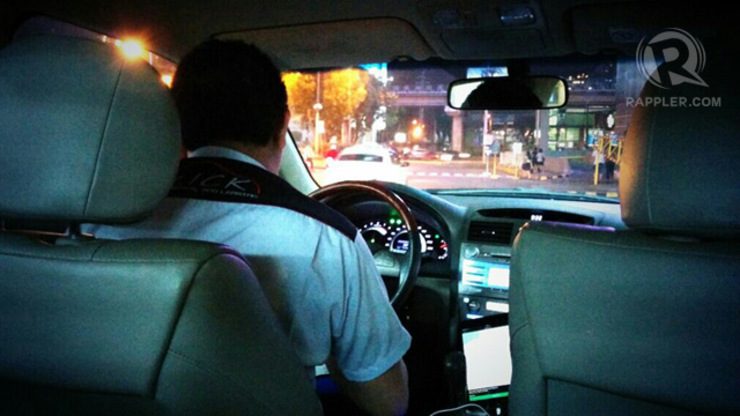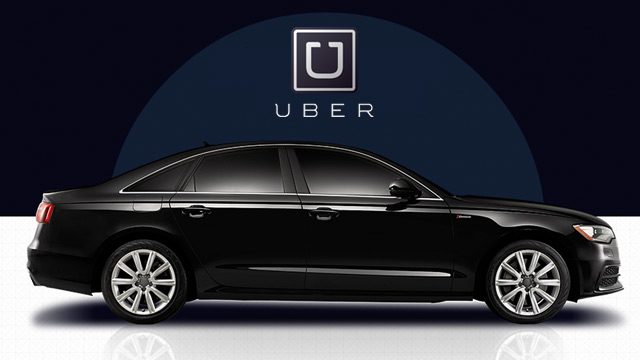SUMMARY
This is AI generated summarization, which may have errors. For context, always refer to the full article.

For most of us who ride taxis, we often face this paradox: when you need a taxi most, that is when there doesn’t seem to be enough of them on the road. Or they will take rides very selectively, and then only at a negotiated premium. Clearly, this is an unpleasant experience.
Notably during peak traffic hours, rides are unpredictable, many are left stranded, and for those who do get a ride, one can’t help but feel like a victim of extortion—meters are no longer used, and rides become much more expensive than the regulated metered fare. Add to this that many taxis are typically very poorly kept, and the service leaves much to be desired. While most taxis have signs with phone numbers to call the Land Transportation Franchising and Regulatory Board (LTFRB) if one has any complaints, most realize the futility of this, as the bad behavior of drivers (not all but a good number) goes unabated.
In recent years, innovations in technology have enabled new ways for commuters and drivers to connect, enabling riders to send market signals to drivers who do provide better services by choosing to ride with them. Uber is one such innovation. It’s a ride-sharing smartphone application that connects car owners and taxi drivers with people willing to pay for a ride for pre-specified pick-up points and destinations. It has the additional function that riders can rate their drivers (and their vehicles), providing information for other riders so they could choose those with better services. It has become so successful, in fact, that taxi companies and regulators have taken notice.
Crackdown
Last October 22, 2014, a partner car of Uber in the Philippines fell in the first sting operation conducted by LTFRB. The car owner was fined ₱200,000 due to the absence of a franchise to operate as a public vehicle. This was not the first instance of Uber-reaction.
The company was founded in March 2009 in San Francisco, California. Users must be connected to the internet to get their locations. Drivers get a rating from 1 to 5 stars from passengers, which can also be seen by customers as they wait for a ride. Passengers are billed through their credit cards based on the time and distance spent on the road. These drivers often use well-maintained private cars.

Uber drivers can charge up to three times the fare from a normal taxi ride. But some commuters seem to find the value of convenience, reliability, and comfort from using Uber far outweighs this additional cost. Uber has expanded to over 200 cities in 45 countries with a value of more than US$18 billion.
Since its expansion, Uber has triggered both praises from the public and scrutiny by regulators. Just this year, cities in Belgium, Australia, and recently Nevada in the United States have banned the app and fined Uber drivers, describing the service as illegal. Yet, there have also been instances wherein Uber was initially banned and eventually allowed to operate, such as in Germany, Washington State, and Virginia. Seattle has also allowed Uber and other similar companies to operate as well but with a cap on the number of allowed drivers. The California Public Utilities Commission went so far as to create a new category, “transportation network companies”, in order to cover such companies as Uber, Lyft, SideCar and Summon.
Anywhere Uber and the like operate, public transport groups who face competition from it are predictably initiating moves to ban it. In the Philippines, LTFRB received complaints from the Philippine National Taxi Operators Association about Uber for running illegal (or franchise-less) for-hire vehicle operations in Metro Manila. The main reason the agency cited was “concern for the safety of passengers.”
Monopoly vs competition
Regulating competition is a key aspect of work for the LTFRB. Franchises granted to taxi owners are a means to manage the number and quality of services provided by this mode of transport. By granting a pseudo-monopoly of taxi services (only those with franchises can ply the streets) one can make sure that prices are stable and predictable (through metered fares) and the quality and safety of transport services are ensured (through periodic franchise review and renewal). That’s how it works on paper—reality is vastly different as noted earlier.
Understanding the economics of the taxi business might also yield some insights here. It’s possible that the taxi drivers’ meager income is triggering their predatory behavior, i.e. choosing rides and forcing higher prices on riders notably during peak hours.
Our back-of-the-envelope calculations suggest that taxi operators earn almost ₱500,000 a year just from one taxi versus ₱162,000 earned by the taxi driver. Hence each taxi driver earns roughly around ₱13,500 a month only, net of gas and other expenses operating the cab. Taxi owners, on the other hand, earn an internal rate of return of up to 122% from their taxi investment, net of the franchise cost and other expenses. (Just for comparison, power projects are lucky to generate 15% to 20% IRR.) And as traffic worsens during peak periods, drivers burn more gas that eats into their income, while the “boundary” of taxi owners is fixed (usually at around ₱1700 per day).

The system favors the taxi owners heavily, while at the same time creating strong incentives for drivers to flaunt regulations by abandoning their meters and seeking negotiated fares during peak times. This also compels many drivers toward the behaviors we described earlier. Think of each driver “shopping” for riders as a mini-monopolist (we have all seen how drivers negotiate with one rider after another during rush hour); and consumers as their choice-less counterparts. This is highly predictable “price discriminating” behavior (in the lingua of economists), as higher variable costs of operation prompt drivers to find ways to charge more.
This behavior is probably among the reasons why some customers appear to prefer Uber. The app effectively puts choice back in the hands of riders, by allowing them to scan the vicinity for alternative rides. And even if they still choose the normal taxi, at least they figured alternative options.
Perhaps for a growing number of smartphone toting riders, Uber offers a safe, predictable and higher quality alternative to the normal taxis. In other cities where Uber operates, drivers are able to break free from the middle man (the taxi unit owner) enabling them to enhance their income.
A better understanding of the economics of the taxi industry suggests that LTFRB may be targeting the wrong issue here. If it claims to protect riders and improve their welfare, they should focus on the rigid boundary system and how, combined with traffic, this is eroding the daily incomes of taxi drivers and possibly fueling the predatory behavior that harms public welfare. The interesting thing here is that Uber offers alternatives and could actually be tempering this predation through competition. Targeting Uber appears to miss the point completely. – Rappler.com
Ronald U. Mendoza is Associate Professor of Economics and Executive Director of the AIM Policy Center. The author thanks Aladdin Ko and Jess Manipon for helpful research assistance. The views herein are the author’s and do not necessarily represent those of the Asian Institute of Management.
Add a comment
How does this make you feel?
There are no comments yet. Add your comment to start the conversation.